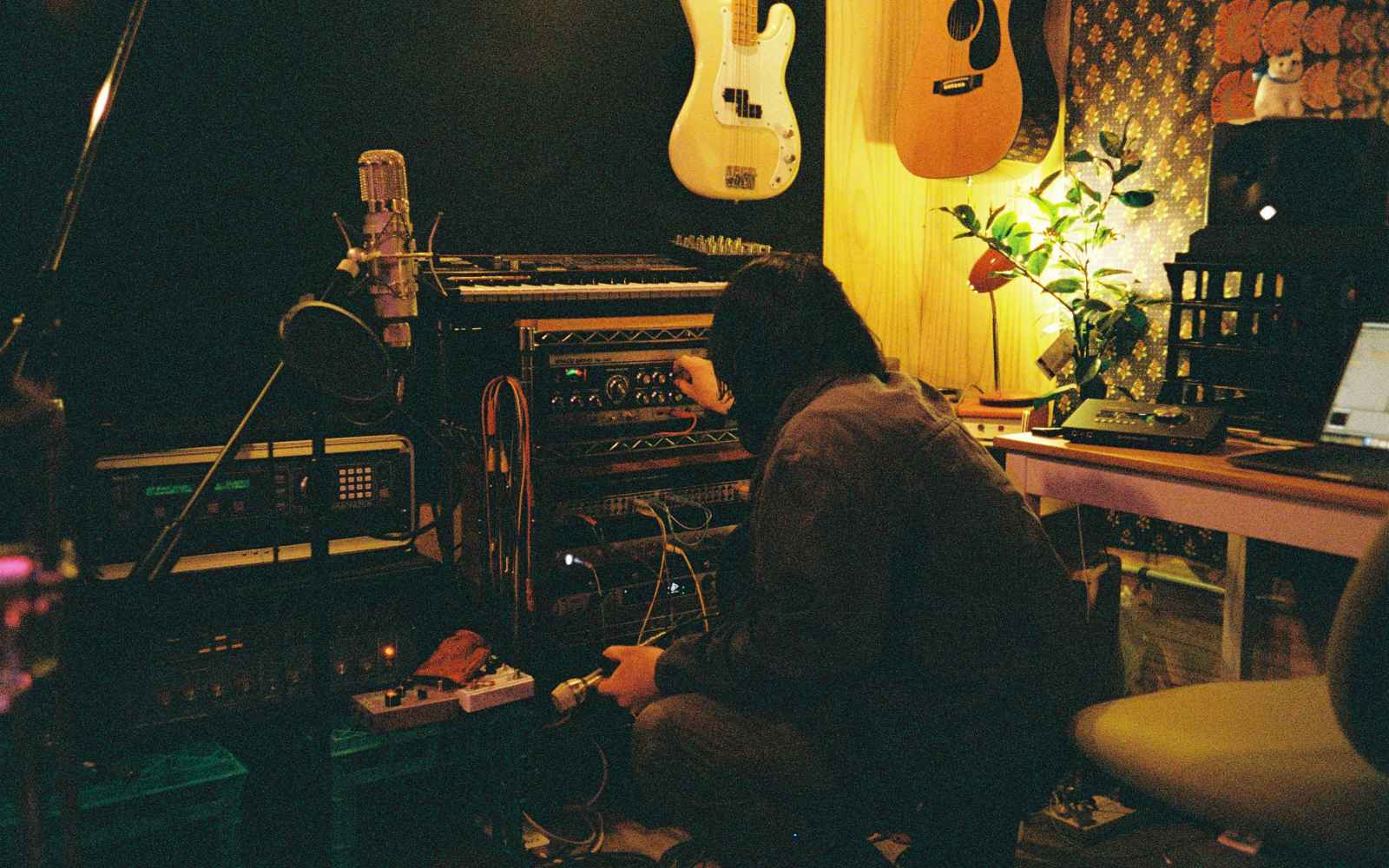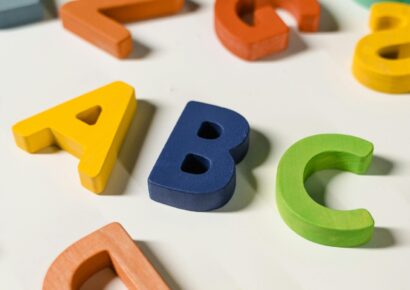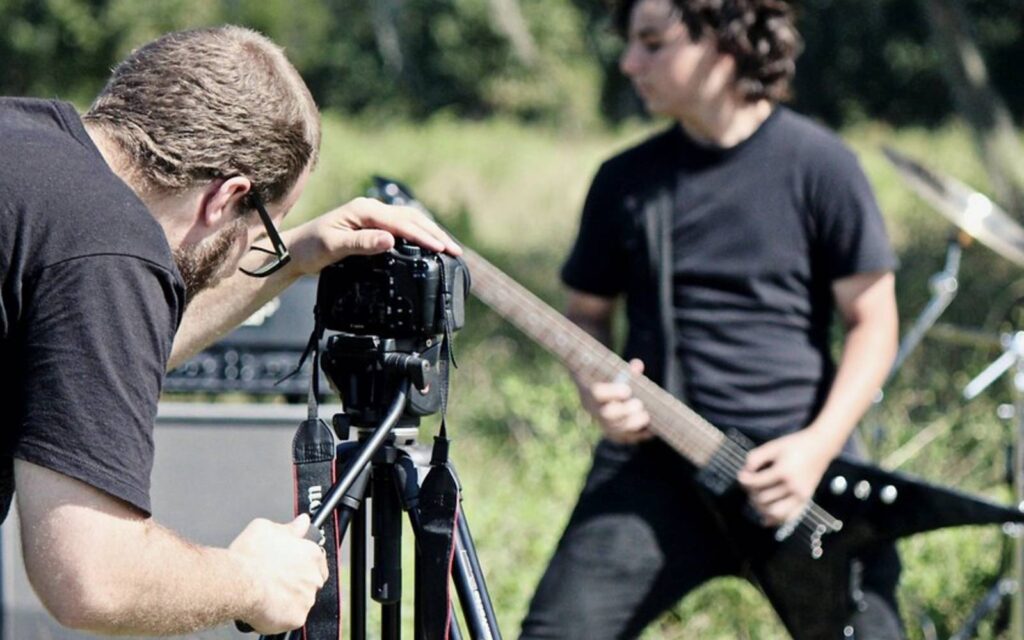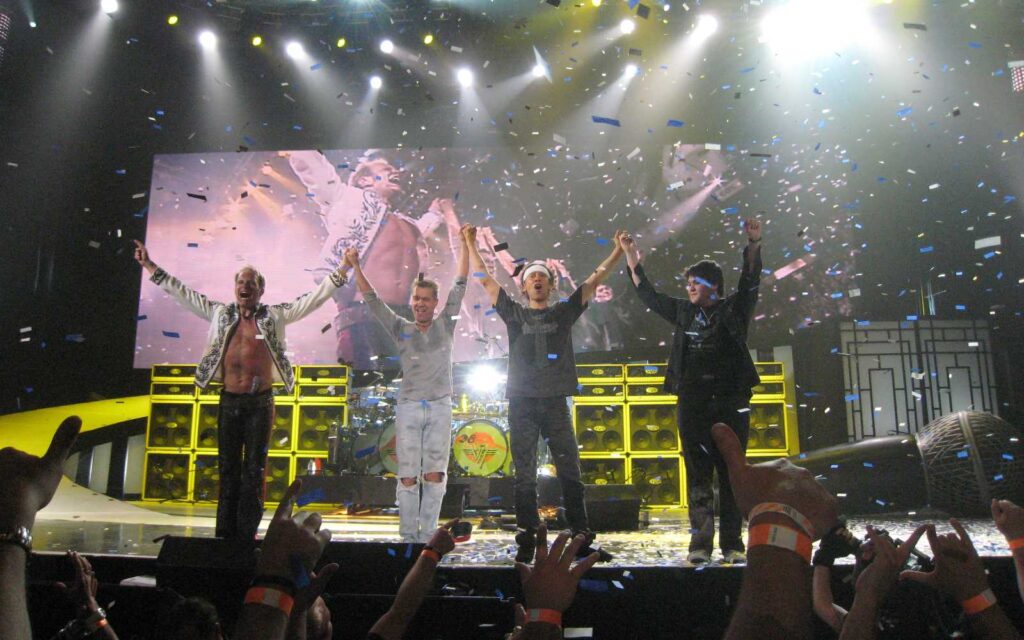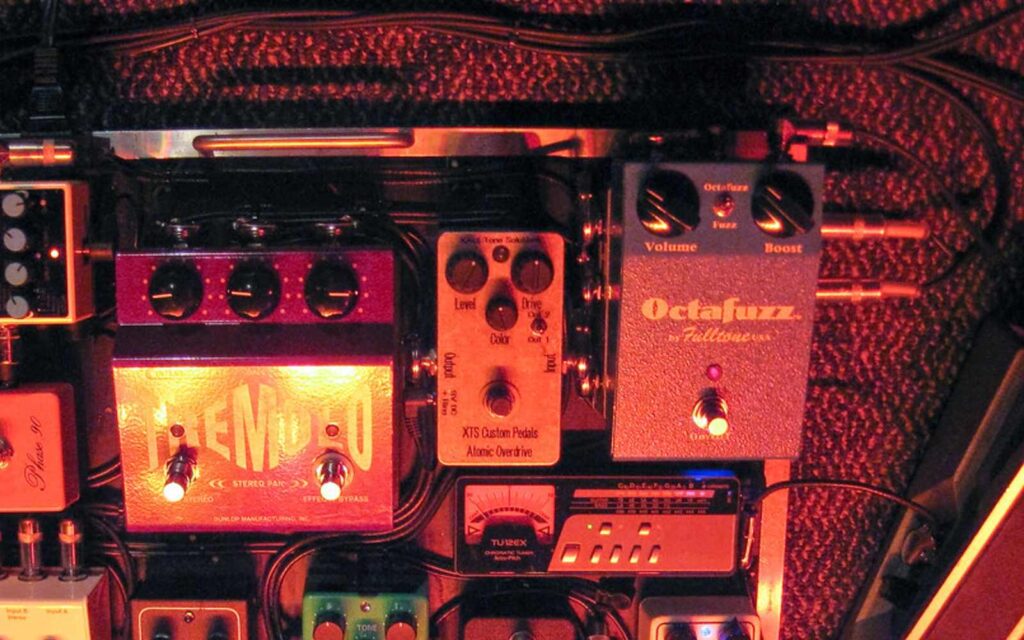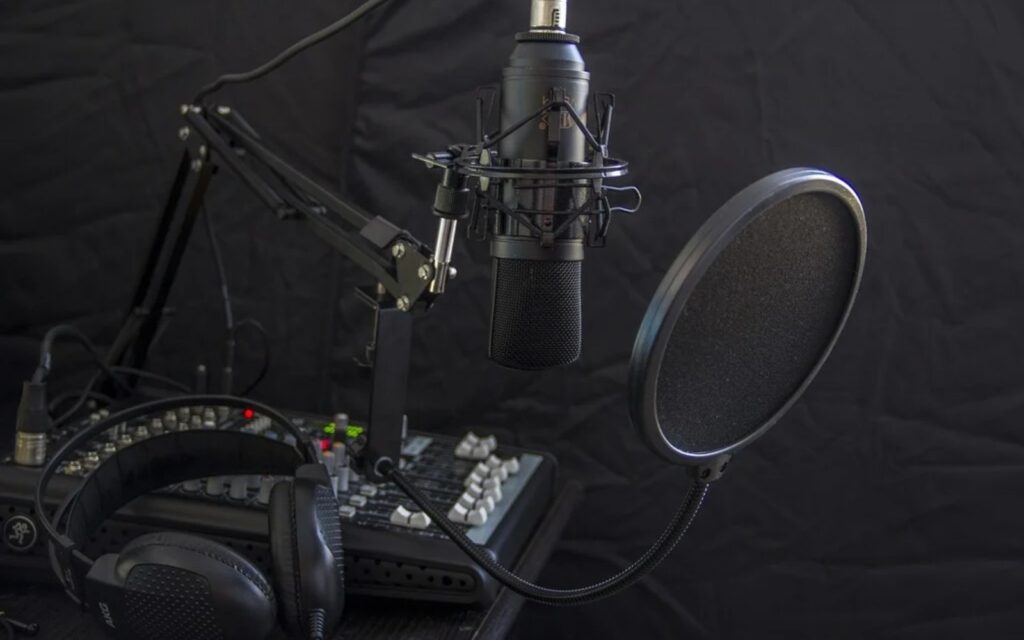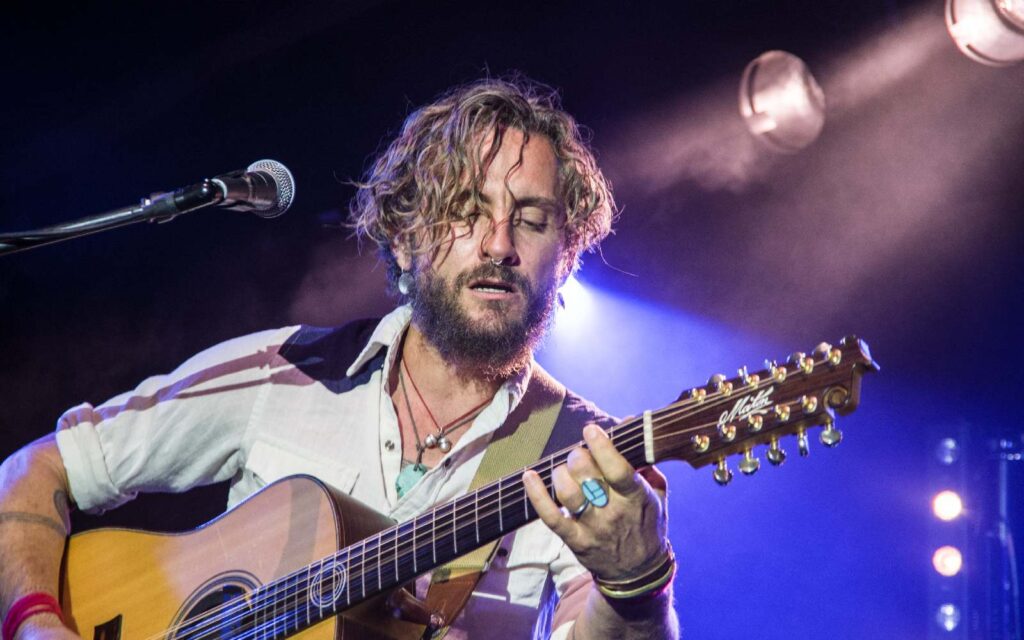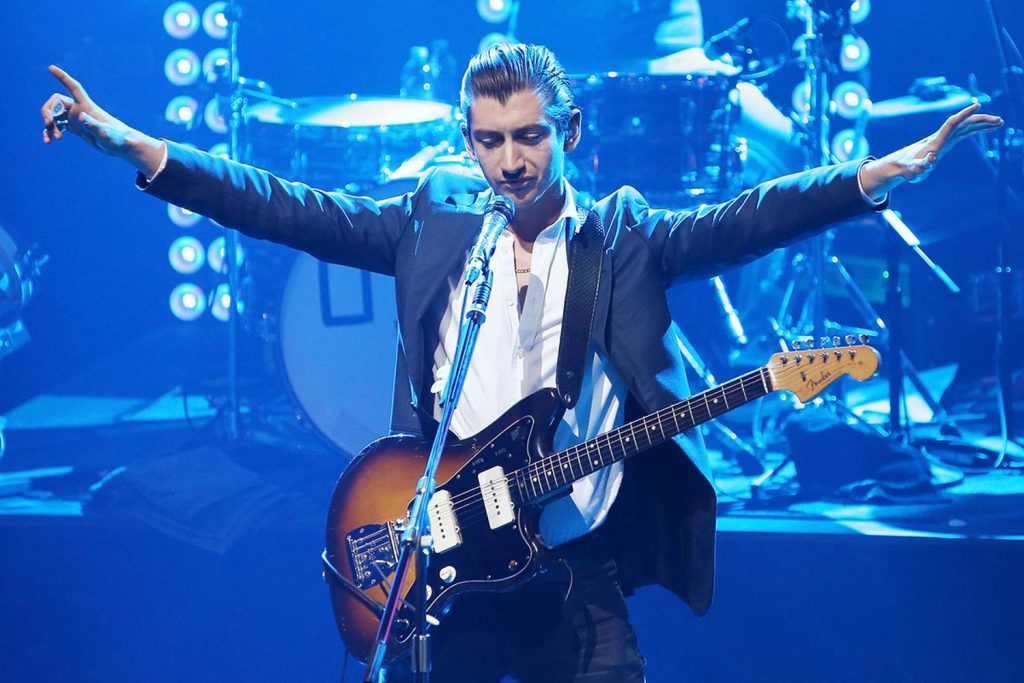As a self processed gear lover, David Quested straddled the line between producer, mixer and musician for his new EP.
Local The Neighbour is a Naarm-based, Garramilla-raised artist doing things his own way. The musical project of David Quested, Local The Neighbour has a new EP out now VALLEY pt. 2, bringing together his love of warm, vintage and analogue sounds and modern techniques to capture it all. We were lucky enough to chat to David about the creation process!
David, thanks for taking the time! You went to Victorian College of the Arts and UCLA. How have these shaped your music writing and making process?
Hey! Thanks so much for having me. Stoked to chat.
So I studied Jazz Performance at both and found that period of my life extremely integral. I think when you’re learning about so many things, it’s easy to get confused and a big part of the growing process is filtering through everything and choosing what is going to suit you and your workflow/personality.
In many ways I was allowed to freely explore ideas without the consequence of having to deliver a solid outcome, so I would take that chance to explore different creative concepts and see where they’d lead. In short, I’ve become really reliant on process based learning/creating and less driven by starting out with a goal. Obviously these two things push and pull depending on the situation, but I find it tough if I’m purely making music where it must meet a brief or have a certain outcome musically. I want to let the music be what it wants to be organically!
Read up on all the latest features and columns here.
You’ve described a move you made as a “Jexit” – do you still feel jazz influence in your music?
Haha yes, a friend of mine coined that term (jazz exit). In many ways I consider myself to have shed a lot of those influences, however, friends always seem to point out that it’s still quite evident in what I do! I think the biggest thing I’ve retained is a ‘jazz attitude’.
All of my favourite jazz musicians have this sort of ‘punk’ outlook in many ways. Tony Williams, Miles Davis, Elvin Jones, Brad Meldau and Keith Jarrett all seem to have this raw energy when they play and it’s explosive! Jazz kind of started as a way to rebel, and the musicians definitely played with a lot of fire underneath them. I definitely want the feeling of searching and never letting myself ‘arrive’ in a place and becoming complacent. That’s what I think is amazing about the jazz world.
Another big factor is the ability to commit to an idea. I definitely try to think about this when I’m recording! I want to have my idea and be committed to it, so my process is always trying to dial a sound in before it hits the computer. I think as an improvising jazz musician, so much of the bandstand dynamic is having a musical conversation with the other band members and that means you don’t want to back down from an idea. You want to run with it and make it into something, and not be afraid!
The EP sounds like it was recorded on very crunchy and ‘warm’ kinda gear. What attracts you to this kind of sound?
Yeah 100%, I’m a huge fan of analogue gear and creating a lot of character in my recordings. I love tube and tape saturation and all the music associated with that aesthetic.
I think after doing a deep dive into recording and production, I’ve realised that all of my favourite music is probably exclusively recorded on vibey pieces of gear whether it be hi0fi Eric Valentine records I listened to as a kid, or lo-fi/DIY projects like Unknown Mortal Orchestra.
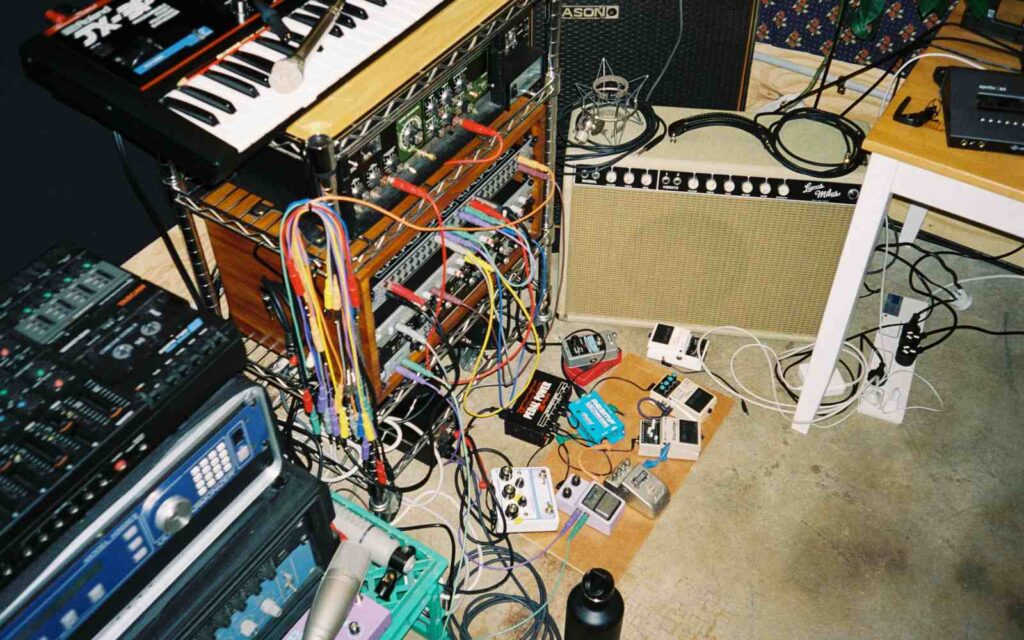
I guess because I love these sorts of artists, I have a natural tendency to want to pull those sounds and gravitate to that a lot. I love the Arturia Mello-Fi plugin and have some Tascam cassette decks I use. Just kind of affordable ways to get the feeling of tape without having to get a fancy 2” or something. I try to lean into the fact that I like to saturate things a lot. I love chorus too, so cassette type recording methods suit me really well!
As a drummer mostly, I’m a big believer in recording with decent preamps. I love the tactile aspect of it and the fact that I can drive the preamp on the way in to get saturation. To me, my preamps are usually getting a healthy amount of colour and I think this helps a lot.
The pres I used the most on the EP were my UA 2108s which I sadly have since sold. Those were really punchy and always gave me a pleasing sense of saturation. I love mostly dynamic and ribbon mics and use my [beyerdynamic] m160 a lot on guitar and drums, and then dynamics like [Sennheiser MD]441, [Electro Voice] RE20 (especially on snare!) and weird cheap mics. I have a strange rectangular shaped 70’s Uher mic I got for $100 and love the sound of that thing on anything I need to cut through a mix.
It feels like it’s got a healthy amount of 4k or something, and I really love that. Then I do use a couple condensers, maybe on drums or vocals. I love the Shure KSM32, sometimes they pop up for cheap and I get a lot of mileage out of those. It’s kind of a secret weapon people don’t tend to realise! I also was lucky enough to borrow my friend’s Flea U47 and that thing was unreal. It definitely ruined a lot of other mics for me because it’s all I could think about!
This kind of sound is generally associated with recording, instead of shaping the sound after the fact in the mix. How close are you getting to the sound on the way in?
I’d say 70% shaped on the way in. Depending on the situation. If I know I need flexibility later I’ll maybe take a DI of it and then send it back out. But in an ideal world, I’d have everything dialled before it hits the DAW.
Personally, I struggle to record into the box without any processing as I find it uninspiring to perform the part. Usually I’ll dial in the tone and then maybe back it off a touch so I have some room to push it later. Other times I’ll just be bold and commit to something. I borrowed my friend’s Ampex 601 preamps and used those a bunch on the EP. I think I almost exclusively used those with the VU pinned on the red haha. The most obvious moment of that is the guitar solo on “Grand Slam”.
When I record drums I’d probably just try to get a good recording of the kit and have one or two character mics which are slammed or heavily processed, then I can blend them in. I definitely try hard on the engineering side to get the sound as ‘mixed’ feeling as I can. I’ve been fortunate to work with some great engineers and that’s always been the big takeaway from working with them – it should sound good before it even hits the DAW.
You’ve used mono overheads mics specifically – what attracts you to this? Do you dislike stereo overheads?
It started off out of necessity, as maybe I didn’t have enough inputs to run stereo or I didn’t have a matched pair of mics, but from there I just started really loving a mono drum sound. I often find myself loving records that have a mono drum sound and am a huge fan of a single [AKG] D19 overhead and getting the majority of the kit from one mic. As time goes by, I’ve realised that I want to try and use less mics on the drums. I definitely multi-track a bunch of mics, but then I start muting them and shaping my sound from there – pretty standard stuff. Something I did do is have certain overdubs in stereo and create width that way, but still retaining a mostly mono kit sound. To me the drums are more focused feeling in mono and I like that. I also try to avoid phase stuff and this keeps things really simple.
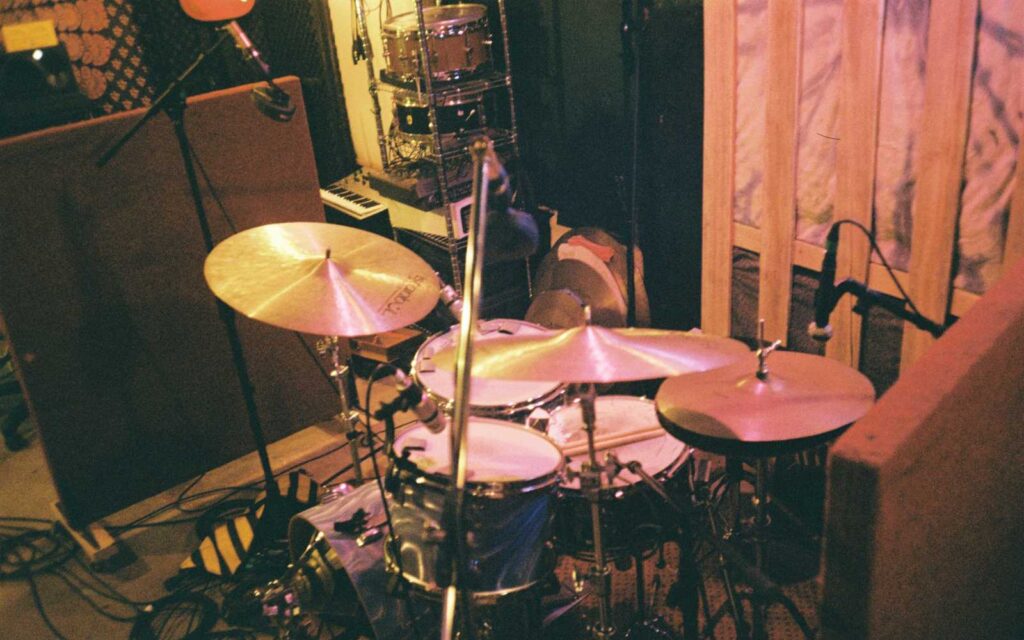
Some of the EP was tracked with stereo overheads as well. I was borrowing a bunch of really nice mics for a while so I had the U47 as mono, and then a pair of Coles 4038 off axis from the cymbals to get more of the ‘bloom’ of the wash. As someone who does prefer a mono sound, this was the most fun I had messing with stereo stuff! I’m a huge Nigel Godrich fan, so I’ve watched a lot of those Basement recordings and always wanted to try the Coles mics in the position he uses for the cymbals. It makes a lot of sense to me when paired with the mono overhead. As a drummer it also changes how I play, which is always fun to mess around with.
Why Melina Duterte to mix the EP?
I’ve been a fan of Jay Som (Melina’s solo project) for quite some time. I think she was the perfect person for me to work with because she’s also an artist who does everything herself, so she really understood where I was coming from. It felt easy to communicate my thoughts to her as I think we have many similar musical influences. She’s a real gear person too which I loved and tends to inject a lot of character into the recordings.
Some of the EP was a joint mixing situation where she would start the mix and then send me the protools session to finish. It was awesome to see how she had her mixes set up and then having to adapt that into my personal workflow to finish things off – I had a lot of fun doing that.
Melina also has some amazing pieces like the Highland Dynamics BG2, [Urei/Universal Audio] 1176, [API] 560 EQs and Neve channel strips. I’ve only used those types of things in plugin form so it was awesome to get some of the stems back and hear what kind of weight those pieces pulled. I really enjoyed it!
Is there a piece of gear that VALLEY pt. 2 wouldn’t have happened without?
Mhmm I can think of a few!! I realised that choosing a microphone for the right context was really important. For “Cruise Control” I used my friend’s Flea U47 and I found that so helpful because my vocals had a lot of detail, which I loved. I think I also used that as the overhead on drums in that song. It just felt awesome, and super natural feeling without any processing. I was shocked.
The [Sennheiser] 441 dynamic mic. I used that on “The Cure” for the vocals and was really happy with how those turned out. It felt like the right decision mic wise and made me realise I should always think about mic choice before I record.
Effects wise I use my [Roland Space Echo] RE-201 all the time! Lots of just silly sounds or just even as a tape machine. I’m also a massive fan of Daniel Lanois, so I love using the Soundtoys Primal Tap plugin. It’s based on the [Lexicon] Prime Time delay. Those things are awesome and I love making random sounds through playing with that plugin.
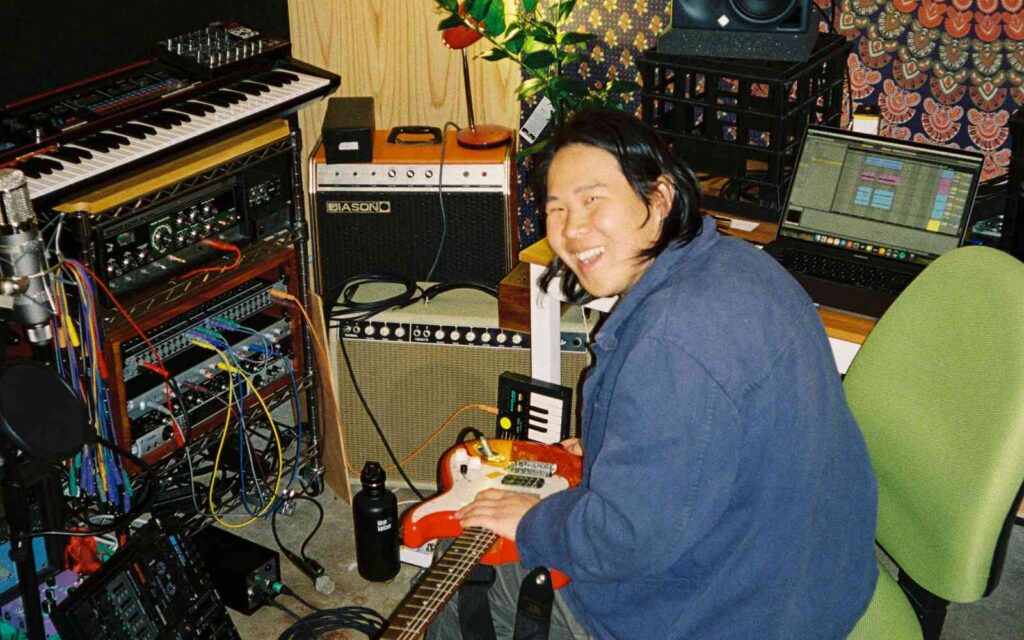
Lastly I’d say the Ampex 601 pres. I borrowed these from my friend, Leigh Fisher, and really didn’t want to give them back! I had never had any hardware tube pieces before and using these to just run stems through and get distortion was super fun. Classic things I’d do was get some digital clipping in my interface to DAW and then run that back out to the Ampex to smooth the harshness over. It was so fun because I suddenly had another kind of distortion I could play with and do different combinations at different stages. Between experiencing that and Melina’s BG2 compressor, it made me purchase my one ‘fancy’ piece of hardware recently, the Lisson Grove R124. It’s a vari-mu comp that you can also switch into a line amp to use as a distortion box. I got that after making the EP, but have already been using that on everything.
The new EP VALLEY pt. 2 is out now, keep up with David here.
